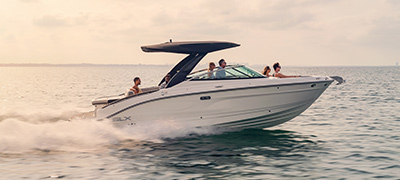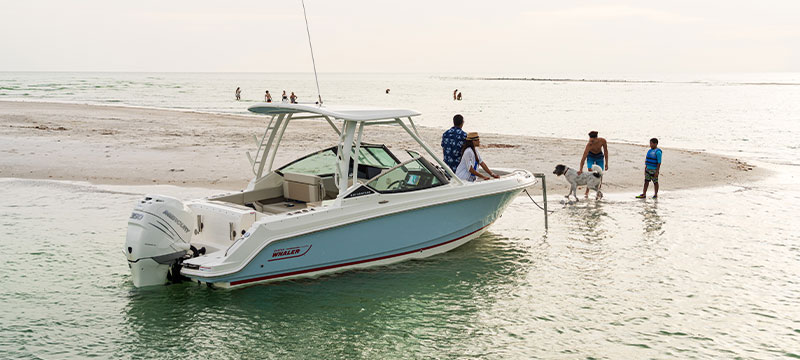Sponson and Other Misunderstood Nautical Terms
There are many terms in boating that are not universally understood. Almost everyone knows what the bow and transom are on a boat. Most know that port is the left side of the boat when facing forward and starboard is the right side when facing forward. So why not just use left and right? The terms port and starboard reduce ambiguities when communicating with people facing different directions on a boat. In this article, some of the more obscure or abstruse terms will be explained.
-

Sponson
Officially, a sponson is a feature on any watercraft that extends from the hull or other part of the vessel to aid in stability while floating, or to act as a securing point for other equipment. Picture a seaplane’s pods that extend out from the fuselage or under the plane’s underside, these are sponsons. Sponsons on boats and ships can be similar; however, they are frequently used to explain hull extensions. Sponsons add stability when underway or at rest, and make turns sharper as they dig in on the inside of the turn. -

Yacht
The meaning of the term yacht is highly debated. Some think it is a boat of over 40 feet. In general, a yacht has to have three features to qualify for the designation: a place to sleep, a galley, and a head. MarineMax has higher standards to be featured on the MarineMax Yachts website. For MarineMax, a new or used boat must be a minimum of 50 feet in length overall (LOA) and possess luxury attributes that make life onboard exceptionally comfortable and home-like. -
.jpg?h=275&w=396&la=en&hash=B8273AF9C146E45439A19E839C87FD9A)
Gunwale
Pronounced “gunnel” the gunwale is the upper most edge of the boat's hull. It is often the point that people board the boat before stepping into the cockpit and will typically have a non-skid surface. From the waterline to the gunwale is referred to as the “freeboard” of a boat's hull. -

Deadrise
The deadrise of a boat defines the vertical transition of the hull from the keel to the hull sides. Often the bow has a sharp entry to slice into chop and gradually becomes less sharp as the hull transitions to the stern. Deadrise is measured throughout the length of the hull. However, manufacturers often refer to the deadrise at the transom to let potential customers understand what to expect from the boat's performance. 20 degrees or more of deadrise at the transom usually defines a high-performance hull with a soft ride. The trade off is an aggressive deadrise makes a deeper hull, which will not be capable of shallow water passages. -

Deep-V Hull
High performance Deep-V hulls were first introduced by Raymond Hunt in the late 50's. Typically deep-V hulls have an aggressive bow entry of 40 degrees or more and a deadrise at the transom of 20 degrees or more. In 1959, Dick Bertram built a wooden model of a Hunt design with a 24-degree deadrise at the transom to be used as a plug for the now famous Bertram Mopie 31. Bertram went racing with the wooden model, where it outperformed the world's top offshore raceboats in the grueling 1960 Miami-Nassau Race. Fiberglass models were made into the 80’s and are still in demand today. -

Wheelhouse
The wheelhouse of a boat is literally the sheltered area where steering wheel is located, either at the inside helm station or the bridge of the boat. Wheelhouse has become an expression meaning within a person's general knowledge and that person is advantageously at ease. As in “… as the questions become less hypothetical and more about simple math he should be in his wheelhouse.”

Getting Started is Easy!
Staying safe on the water starts here. Enjoy the journey as you explore different types of boats, activities, and much more.
Discover the world of boating

Find Your Perfect Boat Today
Start your search for the boat that has it all for your lifestyle! Explore premium new, used, and brokerage boats.
Search Boats

Brush Up Your Boating Skills
Our goal is to make sure you and your family feel confident and comfortable operating your boat. Our videos featuring experts will help.
Get the Tips
